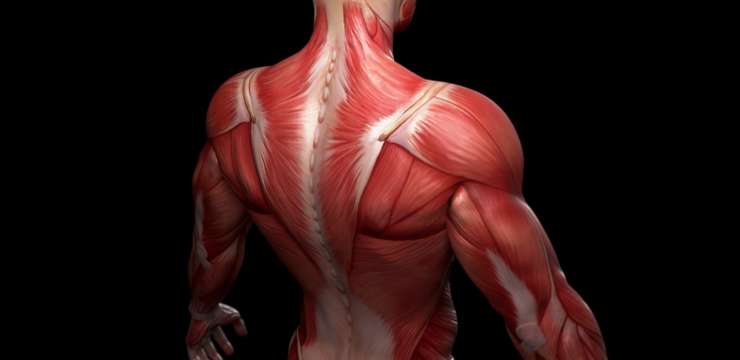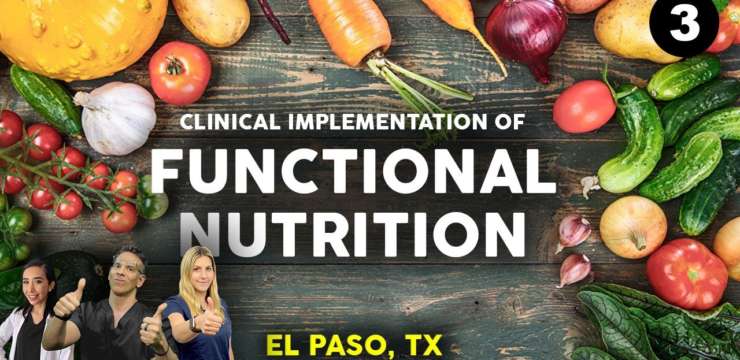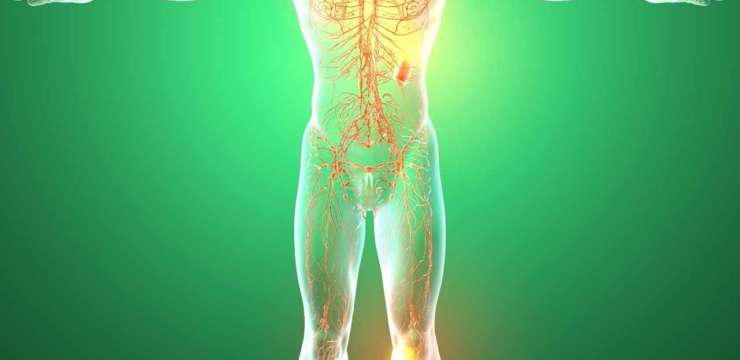As humans, we are constantly exposed to oxidative stress, mainly due to how we produce energy. For us, to live is to be in a…


As humans, we are constantly exposed to oxidative stress, mainly due to how we produce energy. For us, to live is to be in a…

In this Functional Medicine podcast Dr. Alex Jimenez invites Master Hypnotist Eric Richmond CRNA, BCH, CI, RM and Connie Pemberton – retired RN to talk…

Welcome to our newest functional Medicine presentation, in this episode we will talk Testosterone Deficiency in Men. An expert will help us describe testosterone deficiency,…


Individuals and doctors have praised the anti-inflammatory, pain-relieving properties of drinking tea. Inflammation is the body’s natural immune response when injury and infection present. This…

The gut has a significant impact on the rest of the body systems. Research has shown an overlap in risk profiles when assessing the gut and its connection to the other human body systems. For example, the chronic health conditions linked to gut dysfunction are eczema, leaky gut, brain fog, headaches, inflammation, swelling, and an abundance more.Â
The Gut
The human gut is flooded with pathogens and bacteria. These gut pathogens are essential for health and proper function. The bacteria that infest the gastrointestinal tract is combined with both positive and negative commensals. The digestive tract associated with these microbes is known as the gut microbiome. The gut microbiome has an essential role in disease and overall health. There are over 1000 microbial species living within the gut.Â
The growth and involvement of the human microbiome begin at birth. An infant does not have many pathogens. However, at birth, they are quickly colonized. As infants pass through the mother’s birth canal, they are exposed to the mother’s microbiome. This process heavily influences the child’s intestinal flora. Infants who were born via cesarean section showed a reduced number of microbes by the age of just one month.Â
Additionally, the human microbiome contains genes that are linked to metabolic processes. The bacteria in the human gut produce essential nutrients such as vitamins and hold a high responsibility to synthesize amino acids. The lining of the gut consists of tight junctions. Over time, these tight junctions can become irritated if the bacteria is off balance or food is not being digested properly. When food becomes an irritant, it causes the body to create additional inflammation. The undigested food particles then begin leaking out of the gut, back into the bloodstream.Â
Inflammatory Pathways Impacted By Gut HealthÂ
The intestinal epithelium layer is the main component separating the immune system and the external environment. Cells alert threats from pathogens by signaling the immune system through receptors that are associated with specific bacteria in the gut. These responses lead to the release of peptides, cytokines, and white blood cells. These responses can even trigger cell death.Â
The gut-brain axis is communication that relies on neural, hormonal, and immunological signaling. This communication is directly related, and stress has been shown to influence the integrity of the gut and its production, ultimately leading to changes in metabolism.Â
IBS is abdominal pain or discomfort associated with inflammation and changes in gut habits. Those who have higher bad bacteria levels in their gut suffer from more inflammation and side effects associated with IBS.Â
Inflammatory pathways can disrupt many body functions. Some have been linked to metabolic diseases such as type 2 diabetes. Although type 2 diabetes is a complex disorder influenced by genetic and environmental factors, it may also involve the composition of the intestinal microbiota.Â
Gut Health and The Musculo-Skeletal SystemÂ
As previously stated, the gut microbiota is now recognized as a major contributor to health-related issues of the host. With imbalanced microbiota (associated with undernutrition, inflammatory and metabolic diseases, etc.), we see the influence of skeletal muscle and how it is impacted in relation to growth, performance, aging, and chronic diseases.Â
Conversely, microbial imbalance alters the intestinal barrier (leaky gut), allowing the passage of endotoxins (like undigested food particles and lipopolysaccharides). These endotoxins trigger innate immunity, leading to low-grade inflammation and, as a consequence, muscular disorders.Â
Additionally, we see muscle loss and weakness linked to increased morbidity and mortality recently related to systemic inflammation.
Chiropractic can be defined as “a system of healthcare which is based on the belief that the nervous system is the most important determinant of a person’s state of health.” Chiropractic treatments include the manipulation of the spine. With the manipulation of the spine, digestive disorders have seen improvement. Regular chiropractic visits are also shown to help decrease overall inflammation. Â
InBody
Considering the topic of inflammation, the use of the InBody 770 provides an ECW/TBW ratio. This ratio considers science down to the orthomolecular level and is an inflammation indicator. Additionally, the InBody 770 report shows a breakdown of the water in each limb. This chart is helpful in understanding and pinpointing where inflammation is occurring. Additionally, we use the InBody 770 to see a patient’s SMM (skeletal muscle mass), body fat mass, percent body fat, visceral fat (a risk factor indication related to heart attack, stroke, and type two diabetes), and phase angle. The video below provides more information on how a BIA analysis works to provide this information.
Ways To Help Your GutÂ
THERE ARE MANY WAYS TO IMPROVE GUT HEALTH AND REDUCE INFLAMMATION. I HIGHLY RECOMMENDED HAVING LAB TESTING DONE TO TEST YOUR MICROBIOTA AND SEE WHAT STRAIN STRENGTH AND TYPE OF PROBIOTICS WILL HELP YOUR BACTERIA. ASIDE FROM THAT, EATING FERMENTED FOODS AND AVOIDING INFLAMMATORY TRIGGERS WILL REDUCE INFLAMMATION AS WELL. ANOTHER TEST I RECOMMENDED IS A FOOD SENSITIVITY TEST. THIS TEST WILL SHOW WHAT FOODS YOU ARE HAVING REACTIONS TO, AND THE SEVERITY OF THE DAMAGE CAUSED EACH TIME YOU INGEST THEM. -KENNA VAUGHN, ACSM-CEP, SENIOR HEALTH COACHÂ
Sample reports for both of these tests are shown below:Â
[wp-embedder-pack width=”100%” height=”400px” download=”all” download-text=”” url=”https://www.vibrant-america.com/secure/home/DownloadDoc?video_id=2&document_id=1&doc_mime_type=pdf&doc_name=MK-0081-01%20New%20Food%20Summary%20Sample%20Report” /]
[wp-embedder-pack width=”100%” height=”400px” download=”all” download-text=”” url=”https://www.vibrant-america.com/secure/home/DownloadDoc?video_id=2&document_id=1&doc_mime_type=pdf&doc_name=MK-0026-11%20Gut%20Zoomer%203.0%20Sample%20Report” /]
References:Â
Bull, M. J., & Plummer, N. T. (2014). Part 1: The Human Gut Microbiome in Health and Disease. Integrative medicine (Encinitas, Calif.), 13(6), 17–22. Â
Gizard, F., Fernandez, A., & De Vadder, F. (2020). Interactions between gut microbiota and skeletal muscle. Nutrition and metabolic insights, 13, 1178638820980490. doi.org/10.1177/1178638820980490Â
Segen JC. Dictionary of alternative medicine. Stamford: Appleton and Lange; 1998. Â


Studies have found that individuals who consume alcohol in moderation have lower inflammation markers than individuals who do not drink alcohol or heavy drinkers. Other…

Welcome to the last part of our newest functional Medicine presentation brought to you by Dr. Alex Jimenez, in this episode we will talk about…

Welcome to our newest functional Medicine presentation brought to you by Dr. Alex Jimenez, in this episode we will talk about developing skills in working…

Welcome to our newest functional Medicine presentation brought to you by Dr. Alex Jimenez, in this episode we will talk about developing skills in working…

The human body is more complex than scientists understand. Constantly, new research is being conducted and published that dives deeper into the bodies of multiple systems, uncovering new thought-provoking information. As of late, a lot of research is being conducted revolving around the human gut/gastrointestinal system. Originally thought, the gut was made to store and digest food. However, now we see that the gut is the real mastermind behind everyday bodily functions. The gut has now been linked to headaches, inflammation, and autoimmune disease.Â
BackgroundÂ
The digestive tract is one of the essential immune support organs. In fact, it is the immunological powerhouse that houses more than 80% of our antibody-producing cells. This means that our gut is the first line of defense when it comes to unwanted antigens. The gut is so powerful that researchers began to question and test its true abilities.Â
The GutÂ
The thought of the body having two brains sounds fictional, but scientists have begun referring to the gut as the body’s “second brain.†Researchers found that the brain in the human skull, working with the Central Nervous System (CNS) and the gut working with the Enteric Nervous System (ENS), can function separately. Although the two use the same “hardware,†the ENS can manage every aspect of digestion and is a nearly self-contained network of neurotransmitters and proteins.Â
Just throughout the small intestine, there are more than 100 million nerve cells. If you combine the number of nerve cells in the human GI tract, you will find that there are more nerves in the gut than there are in the human spine. This allows the ENS the capability to help with ION transport and GI blood flow.Â
Nearly every substance the body contains to control the brain can simultaneously be found in the gut. One of these substances being serotonin. 95% of serotonin is housed in the gut. A cell referred to as the enterochromaffin squirts serotonin into the wall of the gut, which then communicates with the nerve cells to get things moving. 90% of communication occurring is from the gut to the brain. When we take this into consideration with chiropractic care, we see how it is all connected. Chiropractic care focuses on the musculoskeletal system. The musculoskeletal system includes bones, muscles, tendons, ligaments, and soft tissue. All of these work together to support your body’s weight and help you move to perform daily functions. Injuries, disease, and aging can cause pain, stiffness, and other problems with movement and function. The muscular system is an organ system that consists of skeletal, smooth, and cardiac muscles. Smooth muscle is what lines the interior of the gut. As we know, the muscle systems in vertebrates are controlled through the nervous system. In fact, studies have shown that chiropractic care helps to reduce constipation, low back pain, and overall well-being. This study shows how the gut and digestive systems are directly connected to chiropractic care.
Inner Defense SystemÂ
As previously mentioned, the gut is our inner defense system. The mucosal layer that is associated with lymph node tissue is our primary source of immunological function. Gut-Associated Lymphoid Tissue (GALT) is the first to see foreign invaders and put up a fight. GALT produces two levels of defense, the most abundant being secretory IgA. Secretory IgA binds to antigens to provide protection against microbes.Â
It is important to note that secretory IgA in itself is NON-Inflammatory. However, when secretory IgA is fighting, it sends off signals for help from other immune cells, such as IgG and IgM, which do produce an inflammatory response.Â
Most individuals who have an autoimmune disease have worn-out IgAs. The goal of the gut and its defense system is to keep nutrients in while bouncing antigens off. In the case of autoimmune diseases, we see nutrients leaking out and antigens coming in.
InBody
In order to gain a better understanding of the health of our patients, we use the InBody 770. This allows us to assess health down to the orthomolecular level. With the use of the InBody, we can see phase angle, visceral fat (higher visceral fat has an association with type 2 diabetes, heart attack, and stroke), intracellular water, extracellular water (this is related to inflammation and swelling), lean muscle, and percent body fat. These numbers are critical when considering a health condition, especially if the extracellular water is high. We see a direct overlap in risk profiles with excess extracellular water to other inflammatory diseases and markers.Â
With more research shining a light on these, we see the true the gut and how it comes into play with autoimmune disease and inflammation.Â
[embedyt] www.youtube.com/watch?v=_6_sG_JV-0Q%5B/embedyt%5D
THE GUT IS GENUINELY SO POWERFUL AND HIGHLY OVERLOOKED. I CAN SPEAK FROM EXPERIENCE IN HAVING AN AUTOIMMUNE CONDITION WHERE NOT A SINGLE DOCTOR MENTIONED MY DIET OR MY GUT! NOW, KNOWING THIS INFORMATION AND BEING SURROUNDED BY PATIENTS WHO SUFFER FROM A DISEASE SIMILAR TO MINE, IT IS THE FIRST PLACE WE LOOK. THE GUT IS THE POWERHOUSE AND SHOULD BE TREATED AS SO. -KENNA VAUGHN, SENIOR HEALTH COACHÂ
ReferencesÂ
University, Functional Medicine and Ronald Grisanti , directors. Physiology of the Gut Associated Lymphoid Tissue, Enteric Nervous System and Mucosal Barrier. Functional Medicine University – The Leader in Online Training in Functional Diagnostic Medicine, 2010,.
Rédly M. (2001). The effects of chiropractic care on a patient with chronic constipation. The Journal of the Canadian Chiropractic Association, 45(3), 185–191.Â

[zrdn-recipe id=”43″] www.simplysorghum.com/recipe/view/227/sorghum-breakfast-bowl Recipe posted by: Simply Sorghum

Welcome to part 3 of our Functional Medicine podcasts brought to you by Dr. Alex Jimenez. In this episode an expert will be discussing with…

Welcome to the newest edition of our Functional Medicine podcasts brought to you by Dr. Alex Jimenez. In this episode an expert will be discussing…

Tissues
The human body is composed of many tissues. Each organ in the body can be broken down into tissues. Tissues are sorted based on their basic functions. These include:
Epithelial Tissue
Connective TissueÂ
Muscle Tissue
Nerves Tissue
Muscle Tissue
Out of these tissue types, the only tissue that contracts is muscle. Muscle tissue is further broken down into skeletal, cardiac, and smooth. These tissues are contracted when stimulated.Â
Connective Tissue
Connective tissue has three types as well. Connective tissue proper, fluid connective tissue, and supporting connective tissue. However, all three of these connective tissue types are made up of the same components. They all include specialized cells, protein fibers, and ground substances.Â
The differences between these tissues can be seen in what subdivides them. For example, the fluid connective tissue is subdivided into blood and lymph, whereas supporting connective tissue can be divided into cartilage and bone. Lastly, connective tissue proper is divided into loose connective tissue and dense connective tissue.Â
The substance that connective tissue is composed of is a clear fluid. This fluid has a similar consistency to maple syrup but is clear and odorless. Its primary function is to fill the spaces between the cells and surround all fibers.Â
Loose and Dense Connective TissueÂ
The loose connective tissue binds many structures together. Loose connective tissue allows mobility. Dense connective tissue forms collagen that is strong and flexible. These fibers form branching frameworks for the rest of the body. With the fibers being parallel to each other and very tightly packed, there are forces applied to the issue. Dense connective tissue is responsible for forming tendons, ligaments, capsules of organs, and fascia.Â
Fascia
Fascia varies as its function is primarily based on location. Fascia forms individual muscle fibers and the portions between muscles. These sheets can be thin or thick. Fascia is flexible and can stretch. Fascia lies under the skin, and deep fascia lies overs the muscles. Therefore, it is important that we move fascia frequently. Over time, if we are not stretching, the fascia will become tighter and tighter and eventually restrict movement. Fascia is in every cell, tissue, and organ.Â
When fascia is functioning properly, it has a positive impact on the autonomic and central nervous systems. However, when it is impacted by poor posture, inflammation, or trauma, the fascia can become distorted and apply abnormal pressure to areas of the body.Â
Phase AngleÂ
When focusing on the orthomolecular science of the body, we see how important tissue is. Fascia surrounds every cell, which can help determine cellular health. The phase angle is a snapshot at cellular health where we are able to see how healthy and strong an individual’s cells are. We want patients’ phase angles to be as close to a seven as possible. With a low phase angle (closer to 3 and 4), we see weakness in the cell. Below is a video that helps describes phase angle in more detail:Â
[embedyt] www.youtube.com/watch?v=WwbIsPNUYqs%5B/embedyt%5D
IT IS IMPORTANT TO HAVE HEALTHY CELLS AND HEALTHY TISSUE. WITH THE USE OF THE INBODY 770, WE ARE ABLE TO ASSESS PATIENTS’ MUSCLE MASS, BODY FAT MASS, AND PHASE ANGLE. THE INBODY IS NOT JUST FOR PATIENTS WHO ARE WORRIED ABOUT MUSCLE MASS BUT FOR EACH INDIVIDUAL WE SEE. IT PROVIDES IMPORTANT MARKERS EVERYONE SHOULD BE AWARE OF. -KENNA VAUGHN, ACSM-EP, SENIOR HEALTH COACH
References:Â
Grisanti, Ron, and Brad Hayes, DC  FDMT580G Myofascial Disruption Technique. Functional Medicine University, www.functionalmedicineuniversity.com/members/598.cfm. Â
Additional Online Links & Resources (Available 24/7)Â Â
Â
Online Appointments or Consultations:  https://bit.ly/Book-Online-Appointment Â
Â
Online Physical Injury / Accident Intake Form: https://bit.ly/Fill-Out-Your-Online-History Â
Â
Online Functional Medicine Assessment:Â https://bit.ly/functionmed
